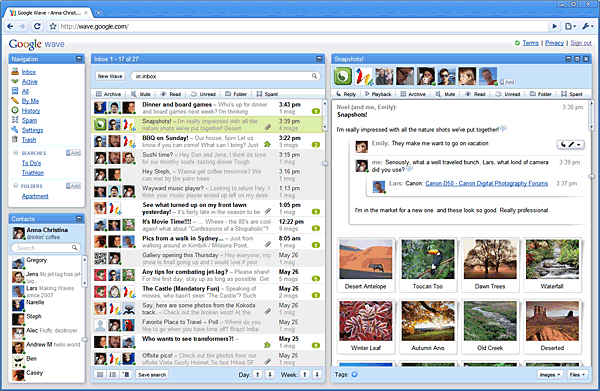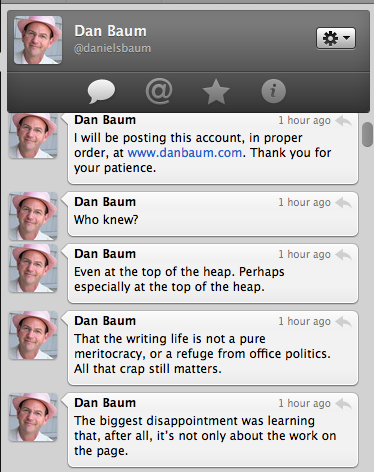Looking for inspiration as I worked on my video for Say Everything, I went back and re-viewed Michael Wesch’s brilliant Web 2.0 video, “The Machine is Us/ing Us.” It’s had something like 10 million views on YouTube, so you probably saw it already, but if not, it really is worth your 4 minutes.
One of Wesch’s basic points is that it was the separation of form from content — of the software layer that presents content from the layer that stores the data — that made the entire boom of the user-contributed Web possible. In many ways this is inarguable. Such separation is a basic principle of good content-management software; the tool that publishes my blog (and millions of others) depends on code that keeps these realms pretty much in their respective corners, allowing us to alter at will how we dress up what we publish, and to flow the same material easily through different digital pipes.
But two things nag at me about this argument.
The first is a historical observation. The code we rely on today to produce Web sites and blogs, with its XML and XHTML and versatile but painfully complex CSS templates, is daunting to the uninitiated. When I built my first website in 1994 you could learn enough HTML to do so in an hour or so. You couldn’t do a fraction of what we can do today; but you could publish. As Justin Hall trumpeted on his how-to pages, “HTML is easy as hell!â€
And it was that sort of ease that kickstarted the early Web and inspired the whole long train of development that has led to millions of blogs and Flickr and Facebook and Twitter and whatever’s coming next. It wasn’t essential to separate form and content to get this stuff going. Had HTML been more elegant, it would probably also have been more impenetrable and unforgiving. And we would all be the poorer for it.
Now today, of course, most of us don’t know or care about either HTML or the more complex layers behind it; our tools (mostly) succeed in hiding all that from us. But it’s important to remember that the vision of a fecund, collaborative, populist Web preceded the emergence of the tools that made it a mass reality. And the vision was in turn inspired by the “easy as hell” nature of the Web’s original authoring technology — which didn’t bother to separate form from content.
The second observation is an aesthetic one. Even as Wesch’s video is extolling the cordoning off of form from content, it is giving us a lesson in the intricate interweaving of content and form. Wesch tells his story in images and screen-grabs that embody the points he is making. The video’s own saga — in which a hitherto obscure young anthropology professor in Kansas cobbles together a video and reaches a global audience of millions — further reflects its themes.
This inseparability of form and content has always been a hallmark of artistic achievement. In successful creative work, form infuses content and content informs form and the two are joined at the hip in ways only a fool would ever wish to separate. That is something Wesch obviously understands. It’s important for the rest of us, in this era of streamlined content management and templated presentations, not to forget it.



